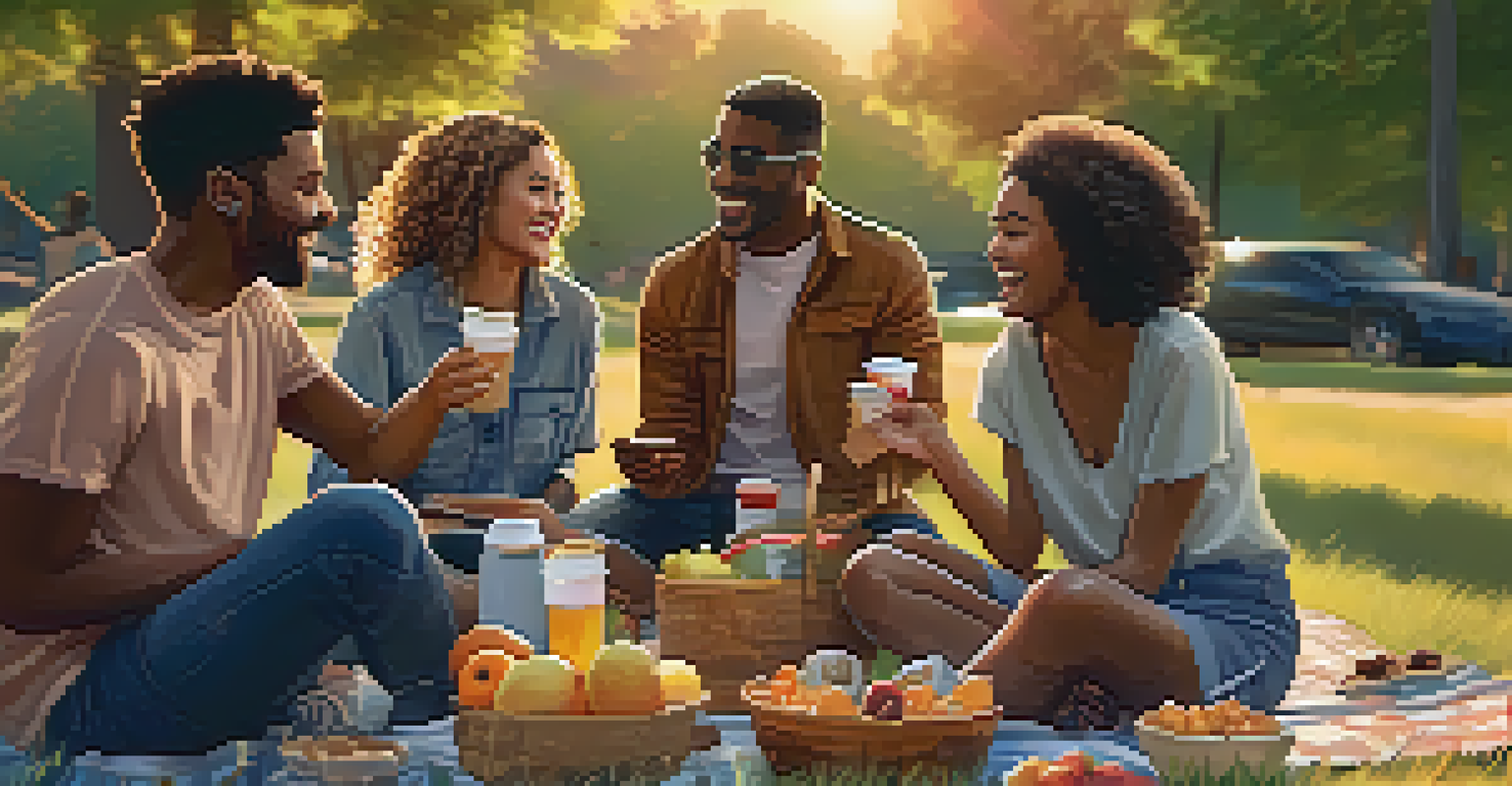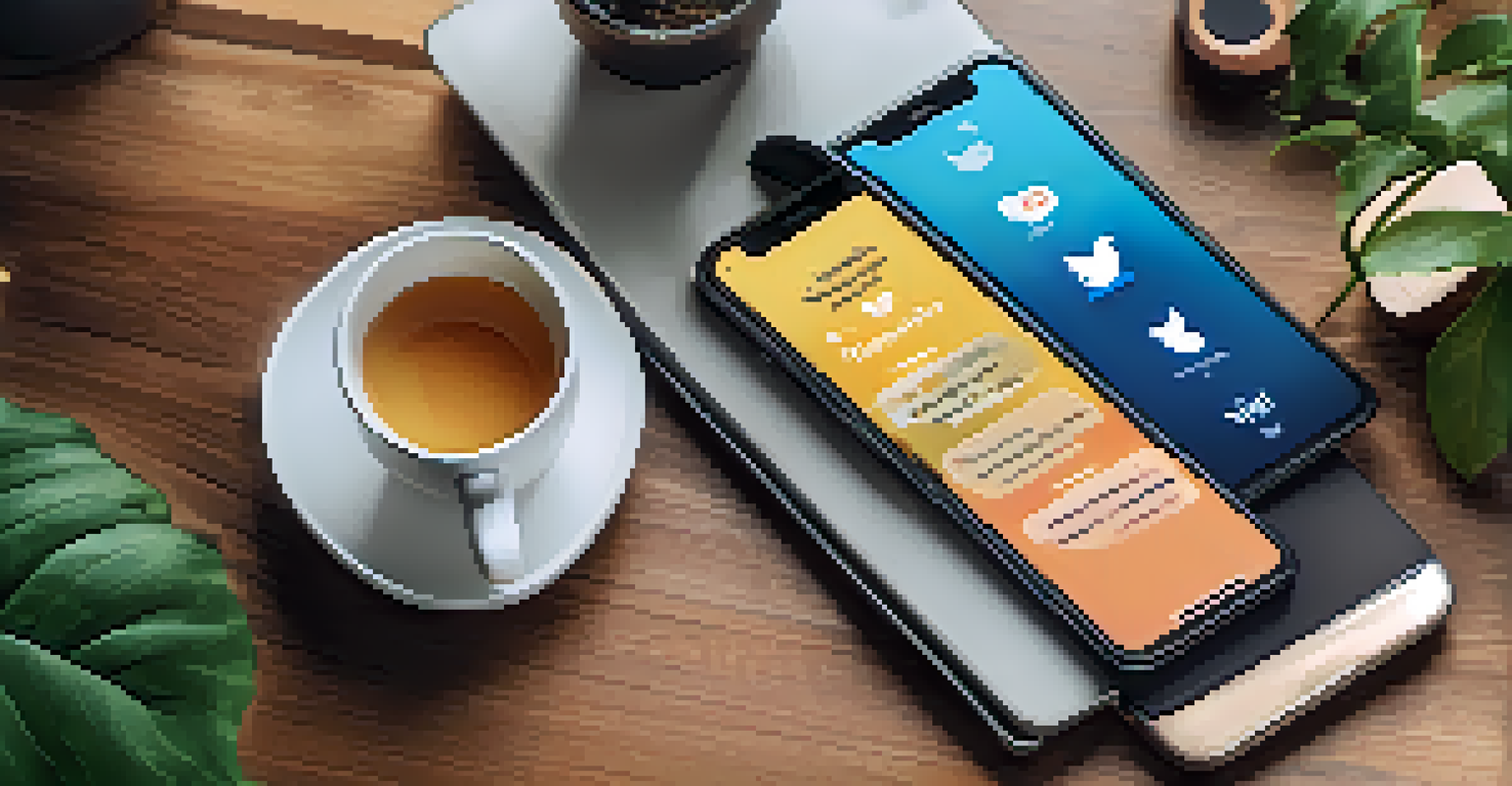Can Social Media Help Reduce Anxiety for Some Users?

Understanding Anxiety in Today's Digital Age
Anxiety is a common mental health issue that affects millions globally. It can manifest in various forms, from social anxiety to generalized anxiety disorder. With the rise of technology, particularly social media, many are questioning its impact on mental health.
Anxiety is like a rocking chair. It gives you something to do, but gets you nowhere.
For some, social media serves as a double-edged sword; it can exacerbate feelings of isolation, yet it also provides a platform for connection. Understanding how these platforms can influence our mental state is essential for harnessing their benefits. While scrolling through feeds might induce anxiety in some, it can also offer relief to others.
The key lies in how we engage with these platforms. Recognizing our triggers and adjusting our usage can help turn social media into a supportive tool rather than a source of stress.
Building Connections and Community Online
One of the most significant advantages of social media is its ability to foster connections. For individuals struggling with anxiety, finding a supportive online community can be a game changer. Whether it's joining a group focused on mental health or following accounts that promote positivity, the right connections can provide much-needed encouragement.

These virtual communities can help users feel less alone in their struggles. Sharing experiences with others who understand can create a sense of belonging. This feeling of community can significantly reduce feelings of isolation, which often accompany anxiety.
Social Media's Dual Impact
While social media can exacerbate anxiety, it also offers platforms for connection and support.
Moreover, these connections can lead to real-life friendships, further enhancing the support network. Engaging with empathetic individuals online can be a vital step in managing anxiety.
Access to Mental Health Resources and Support
Social media platforms have become a treasure trove of mental health resources. From informative posts to live counseling sessions, users have access to a wealth of information. This accessibility can empower individuals to seek help and learn coping strategies.
The greatest weapon against stress is our ability to choose one thought over another.
Many organizations use social media to promote mental wellness, offering tips and exercises to manage anxiety. This can make mental health resources feel more approachable and less intimidating. When users come across relatable content, it can encourage them to take action toward their mental well-being.
In addition, online therapy platforms and mental health professionals often share valuable insights on social media. This blend of accessibility and knowledge can transform how users understand and manage their anxiety.
The Impact of Positive Content on Mental Health
The type of content consumed on social media plays a crucial role in its impact on anxiety levels. Positive, uplifting posts can offer a much-needed respite from the negativity that sometimes permeates these platforms. Users who curate their feeds to include affirmations, motivational quotes, and success stories can foster a more positive mental environment.
Creating a feed filled with encouraging content can help users shift their mindset. For instance, following accounts dedicated to mental health awareness can instill hope and provide reassurance. This simple act of curation can be a step towards reducing anxiety.
Access to Mental Health Resources
Social media provides valuable mental health resources, empowering users to seek help and learn coping strategies.
Moreover, sharing positive experiences can contribute to a cycle of positivity. By posting about personal achievements or uplifting moments, users not only benefit themselves but also inspire others in their network.
Mindfulness and Stress Relief Through Social Media
Many users turn to social media as a means of practicing mindfulness. Platforms can host a variety of mindfulness practices, from guided meditations to calming visuals. Engaging with this content can be a helpful way to center oneself and reduce anxiety.
For example, accounts dedicated to yoga and meditation often share content that encourages users to take a breath and focus. This can serve as a gentle reminder to pause amid the chaos of daily life. Incorporating these practices can lead to a more balanced emotional state.
Additionally, social media can be a space for users to share their mindfulness journeys. This not only fosters a sense of accountability but also allows others to join in, creating a supportive environment for mental wellness.
Navigating Social Media Mindfully
While social media can offer benefits, it's essential to navigate it mindfully to avoid potential pitfalls. Users should be aware of their emotional responses when scrolling through feeds and adjust their usage accordingly. This means taking breaks when feeling overwhelmed or unfollowing accounts that induce anxiety.
Practicing mindful usage can help users maintain a healthy relationship with social media. Setting time limits or designating specific times for social media can prevent it from becoming a source of stress. The goal is to create a balance that allows for connection without feeling burdened.
Balancing Online and Offline Life
Striking a balance between online interactions and real-life connections is crucial for maintaining mental health.
Ultimately, being intentional about how we engage with social platforms can empower us to utilize them positively. This awareness allows users to harness the potential of social media while safeguarding their mental health.
Finding the Right Balance Between Online and Offline Life
Striking a balance between online interactions and real-life connections is crucial for mental health. While social media can enhance relationships, it should not replace face-to-face interactions. Engaging with friends and family offline can provide a grounding experience, helping to alleviate anxiety.
For many, a hybrid approach works best—using social media to maintain connections while prioritizing in-person relationships. This balance allows users to enjoy the benefits of digital communication without losing touch with the physical world. It's important to recognize when it's time to log off and connect with the present moment.

Finding this equilibrium can lead to more fulfilling relationships both online and offline. Ultimately, the goal is to use social media as a tool for connection while ensuring that it complements, rather than competes with, real-world interactions.